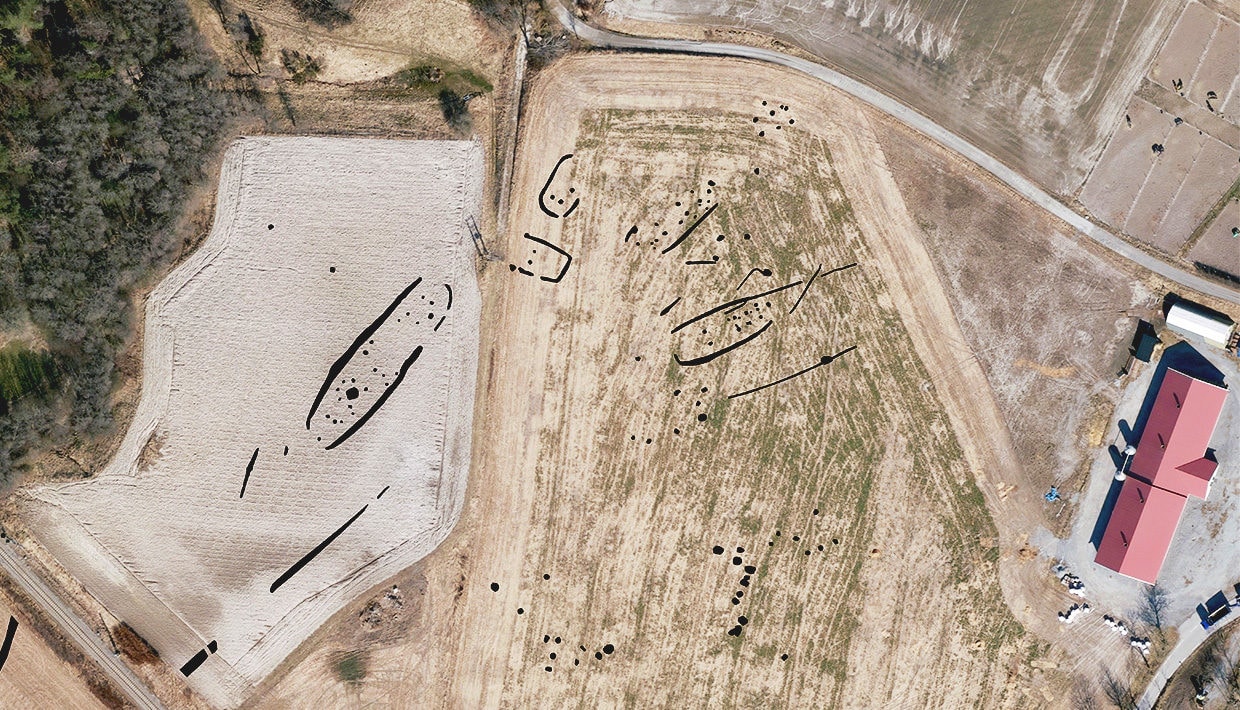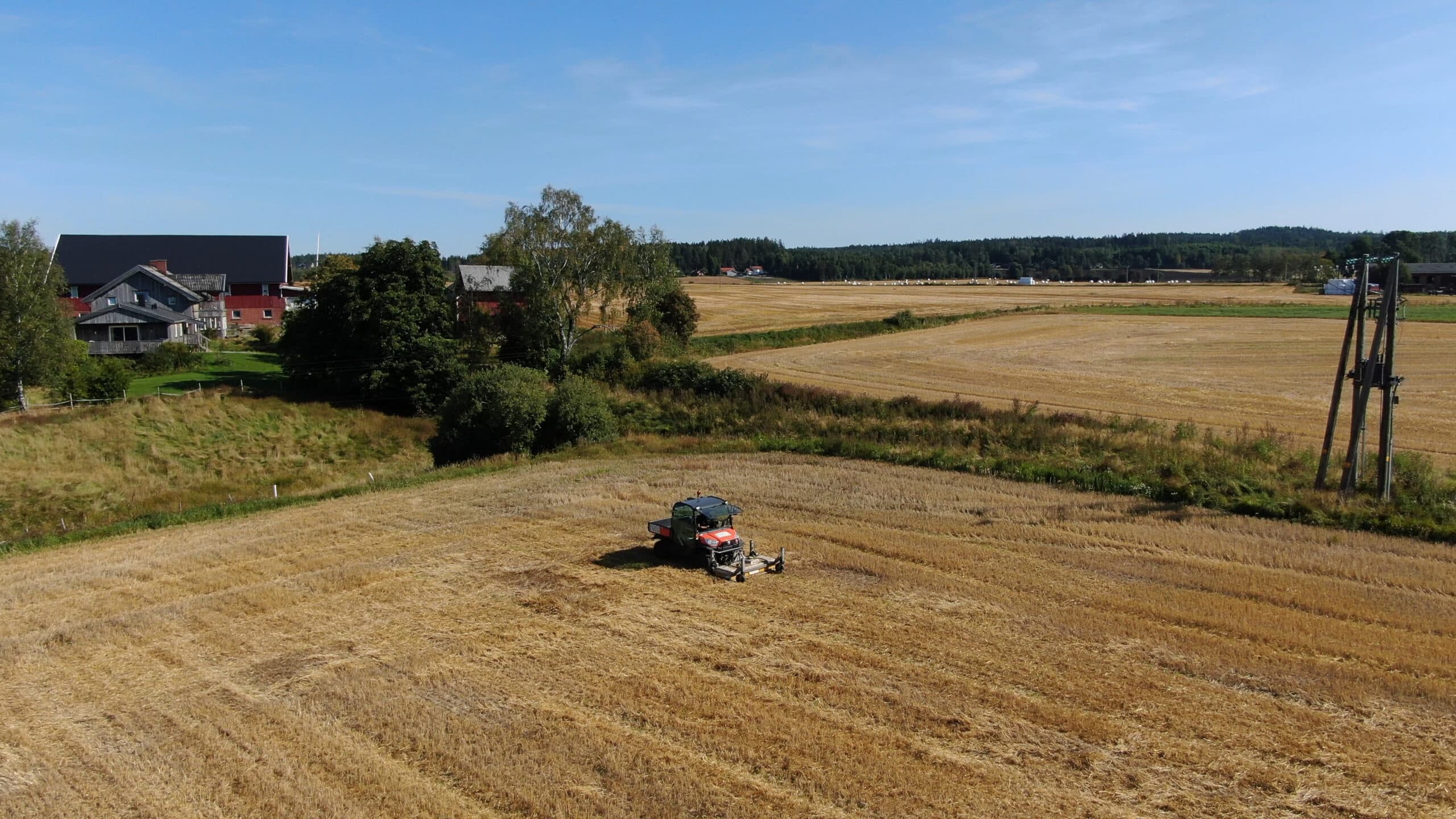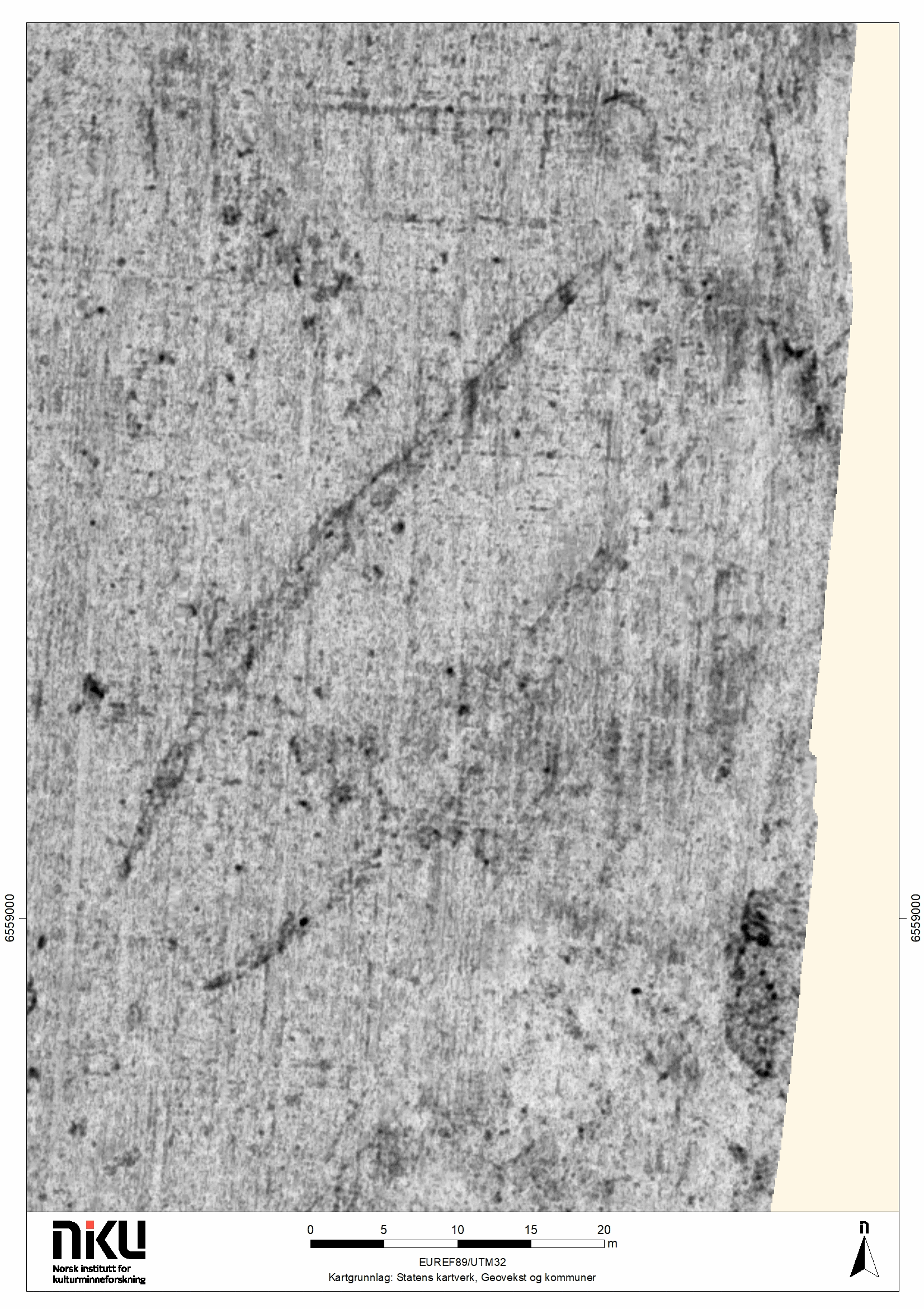
60 metre longhouse discovered with GPR near Viking ship at Gjellestad
At Gjellestad in Norway, archaeologists from the Norwegian Institute for Cultural Heritage Research (NIKU) have found a 60 metre longhouse. There is no longer a doubt that Gjellestad, where the same team discovered a Viking ship in 2018, has been a central place in the late Nordic Iron Age. In the next few years, researchers will hopefully find the answer to how Gjellestad became such an important place.
This autumn the Norwegian Institute for Cultural Heritage Research have examined areas close to where the Gjellestad ship was found through the use of ground-penetrating radar (GPR). The surveys are the first part of the research project Viking Nativity: Gjellestad Across Boarders, where archaeologists, historians and Viking age specialists examine the development of Gjellestad during the Nordic Iron Age.
Even before the project is under way, they have made exciting discoveries.
Viking Nativity: Gjellestad Across Borders
In addition to Knut Paasche (project leader) and Lars Gustavsen from NIKU, the project group consist of Sigrid Mannsåker Gundersen (Viken county), Bjørn Bandlien (The University of Southeast Norway), Rebecca Cannell (NIBIO), Frode Iversen, Mari Arentz Østmo og Christian Løchsen Rødsrud (The Museum of Cultural History, UiO) and Jon Vidar Sigurdsson (The Department of Archaeology, Conservation and History, UiO).
The project is founded by the Norwegian Research Council.


One of the largest longhouses in Scandinavia
“We have found several buildings, all typical Iron Age longhouses, north of the Gjellestad ship. The most striking discovery is a 60 metre long and 15 metre wide longhouse, a size that makes it one of the largest we know of in Scandinavia” according to archaeologist Lars Gustavsen at NIKU.
Gustavsen will be writing his PhD based on the GPR surveys from Gjellestad, and has been the field supervisor of the geophysical surveys.
“To have results such as these as a starting point is more than I could ask for”, he says.
In addition to the 60 metre longhouse the GPR surveys have also resulted in the discover of four other buildings at approx. 15-30 metres in length and up to 13 metres wide. They have also found several ploughed-out burial mounds in the fields north of the Gjellestad farm.
“We are not surprised to have found these burial mounds, as we already know there are several others in the surrounding area. Viken county archaeologists have excavated the area previously and made finds that would idicate more burial mounds here. Still, these are important to know about to get a more complete picture of Gjellestad and its surroundings”, says Gustavsen.

Research project will look at the Gjellestad ship in historical context
The archaeologists have covered 40 hectares south, east and north of the Gjellestad ship with the GPR system this autumn. This is only the start of the project, and one of the next steps are archaeological excavations, that are to be done by Viken county.
“We do not know how old the houses are or what function they had. Archaeological excavations and dating will help us get an answer to this” says Sigrid Mannsåker Gundersen, archaeologist with Viken county.
She and Gustavsen think that the situation of the houses in the landscape has to be seen in relation to the burial mounds further south.
“Finding these longhouses confirms that Gjellestad was a central place in the late Iron Age. Our hope is that within the next years, we will understand the relationship between the ship, the buildings and the rise of central places much better”, says Gustavsen.
Press contact: Lars Gustavsen lars.gustavsen@niku.no | +47 907 97 112

